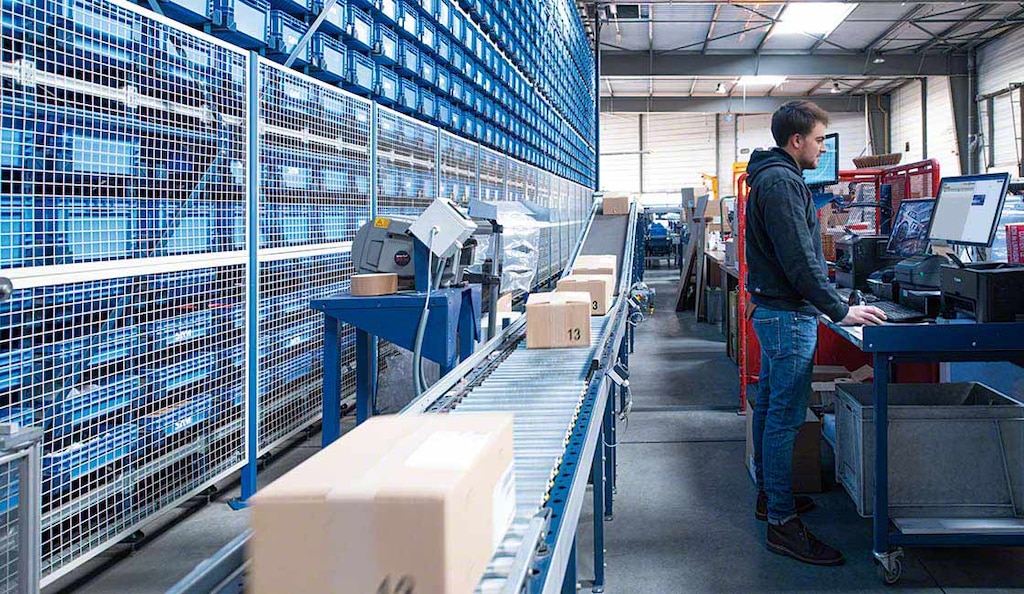
Logistics costs and how to reduce them
All businesses incur logistics costs. While some are unavoidable, others can significantly influence a company’s direction. That’s why it’s essential to understand their impact on the supply chain.
What are logistics costs?
Logistics costs encompass all expenses related to handling, storing, and transporting products. They range from raw materials procurement to end-customer deliveries. The components that make up these costs can vary widely depending on the industry or type of business activity, but they typically share several common elements.
How are logistics costs structured?
Logistics-related costs reach far beyond a company’s income statement. In a competitive, fast-changing market, every detail counts. Poor management of reverse logistics or third-party logistics (3PL) providers can lead to losses — even for businesses selling high-quality products.
These expenses can be grouped into two main categories: direct and indirect logistics costs. Some direct logistics costs examples are freight charges, fuel for the vehicle fleet, and tolls. Indirect costs, meanwhile, comprise office expenses and wages for staff involved in logistics tasks.
Types of logistics costs
Given everything outlined above, it’s important to understand the different types of logistics costs, especially for growing businesses.
Direct logistics costs
- Procurement costs: the purchase price plus any additional expenses required to get the product or service ready for use in the warehouse.
- Storage costs: everything related to owning or leasing a warehouse, e.g., storage solutions, safeguards, and material handling equipment like forklifts. Using high-density storage systems, for example, can reduce the number of locations needed to house goods, maximizing available space.
- Order processing: preparing customer orders for shipment, including packaging and labeling operations.
- Transportation: moving goods from the factory to the warehouse, distribution center, or directly to consumers. Transportation may be by land, sea, or air.
- Last-mile delivery: distributing products to end customers.
- International logistics costs: customs regulations, exchange rates, and international shipping prices.
Indirect logistics costs
- Inventory management: all activities required to keep accurate stock records. A warehouse management system like Interlake Mecalux’s Easy WMS is vital for monitoring and streamlining logistics operations.
- Investment in new technologies: allocating resources toward innovation and logistics system implementation — a recommended practice for staying competitive.
- Administrative and personnel costs: the salaries of warehouse associates and logistics managers.
- Insurance: coverage for goods in transit, among other areas.

Tips for minimizing logistics costs
If you’re looking to cut logistics costs, several key areas can help streamline operations and increase savings:
- Order consolidation. Grouping shipments can lower transportation costs and improve distribution efficiency. This approach maximizes storage and loading spaces while keeping logistics costs down.
- Operational restructuring. Optimizing how your facility runs positively impacts the entire supply chain. Warehouse management software (like Interlake Mecalux’s Easy WMS) helps control and fine-tune all facility processes and resources, maximizing efficiency and cost-effectiveness. Additionally, it provides full real-time inventory traceability, minimizes errors, and boosts productivity.
- Warehouse automation. Incorporating technology such as AMRs, picking robots, and automated systems can accelerate the flow of goods and order picking.
- Logistics service pricing. Regularly comparing carriers and 3PL service providers helps ensure you’re getting competitive logistics rates and the best value for your business needs.
- Order size. Certain logistics costs — like packaging — may seem small but can add up. Once you define the right box or envelope sizes, buying in bulk can lead to volume discounts, lowering your average cost per order and delivering long-term savings.
- Logistics outsourcing. Depending on your business model, partnering with a 3PL provider can be more cost-effective. Sharing warehouse space, equipment, and labor costs with other clients helps keep logistics costs down.
- Procurement. Although manufacturing in lower-cost regions can save money, transportation can offset those savings. As a result, some businesses are shifting to nearby suppliers or adopting nearshoring.
How to measure logistics costs
To understand logistics costs, keep in mind that throughout the process, businesses pay manufacturers, carriers, 3PL providers, and many other stakeholders. That’s why companies track these expenses in a variety of ways.
The first step in measuring logistics costs is to define the analysis period. One option is to do this monthly to make sure expenses stay within budget, although quarterly and annual reviews are also common.
Next, list all expenses incurred with their total amounts. You can then group these entries into categories to identify which part of the supply chain is driving the highest costs. One way to support decision-making for storage, order picking, and shipping is to use the Easy WMS module WMS for 3PL. Its Billing features include quantifying and optimizing logistics activities, automatically logging and accounting for all warehouse tasks, and linking those operations to the appropriate client for accurate, itemized billing.
Trim your logistics costs with Interlake Mecalux
At Interlake Mecalux, we drive order and efficiency in operations with conventional racking, automated systems, and digital solutions. We work closely with our clients when implementing Easy WMS, tailoring it to their needs. If you’re looking to strengthen your supply chain, don’t hesitate to contact us — we’ll help you optimize your logistics operations.
